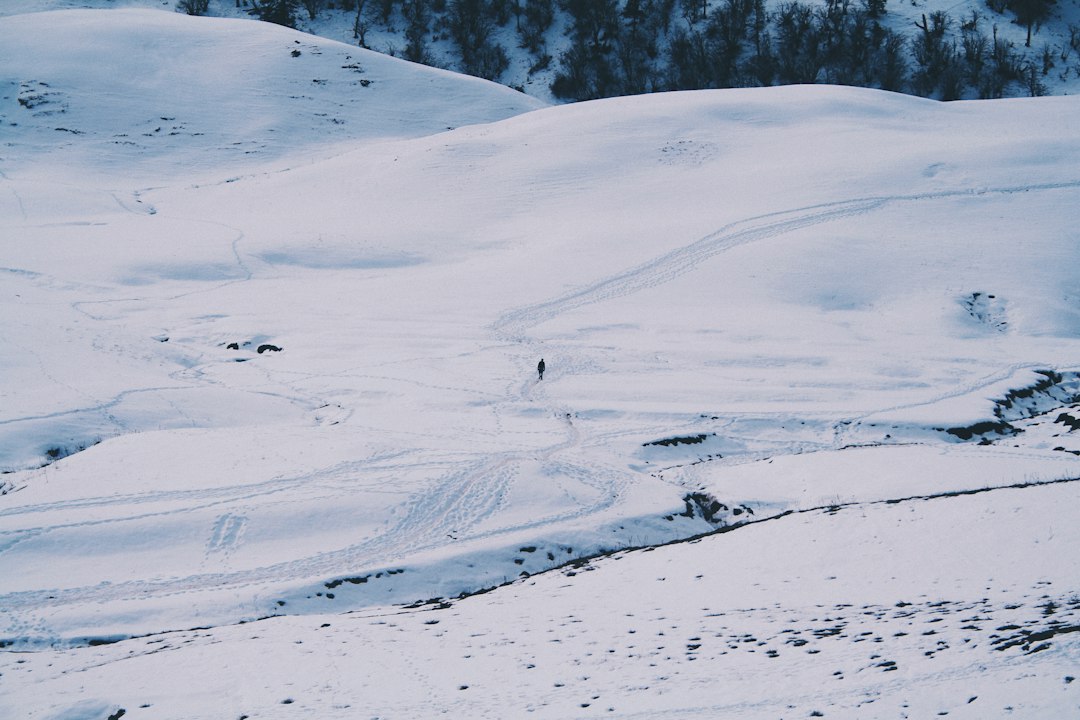The Loch Ness Monster, also known as Nessie, is one of the most enduring and captivating legends in the world. Nestled in the Scottish Highlands, Loch Ness is a deep, dark lake that has been the subject of countless stories and sightings of a mysterious creature lurking beneath its surface. The legend of the Loch Ness Monster has captured the imagination of people around the world, drawing tourists, scientists, and skeptics alike to this remote corner of Scotland.
The allure of the Loch Ness Monster lies in its enigmatic nature. The idea of a large, prehistoric creature inhabiting a hidden world beneath the waters of Loch Ness is both thrilling and terrifying. The legend has been passed down through generations, captivating the minds of locals and visitors alike. From ancient folklore to modern-day sightings, the Loch Ness Monster has become an integral part of Scottish culture and a symbol of mystery and wonder.
Key Takeaways
- The Loch Ness Monster, or Nessie, is a legendary creature said to inhabit Scotland’s Loch Ness.
- The origins of the legend can be traced back to ancient Scottish folklore and legends.
- There have been numerous eyewitness accounts of strange encounters with Nessie on the Loch.
- Despite scientific investigations, there is no conclusive evidence for the existence of Nessie.
- The Loch Ness Monster has had a significant impact on Scottish culture and tourism, and continues to be a popular subject in popular culture.
The History of Nessie: Tracing the Origins of the Legend
The legend of the Loch Ness Monster dates back centuries, with early accounts of strange creatures inhabiting the waters of Loch Ness. In Celtic mythology, there are tales of water spirits and kelpies that could shape-shift into various forms, including that of a monstrous creature. These stories laid the foundation for the belief in a mysterious creature lurking in the depths of Loch Ness.
The first modern sighting of Nessie occurred in 1933 when a couple claimed to have seen a large creature with a long neck and humps swimming in the lake. This sighting sparked widespread interest and led to an influx of visitors hoping to catch a glimpse of the elusive monster. As more sightings were reported, the legend of the Loch Ness Monster grew, capturing the attention of people around the world.
Over time, the legend evolved with each new sighting or piece of evidence. Photographs claiming to show Nessie surfaced, sparking debates and fueling the mystery. The legend became ingrained in popular culture, with books, movies, and documentaries dedicated to exploring the truth behind the Loch Ness Monster. Despite the skepticism and scientific investigations, the legend of Nessie continues to captivate and intrigue people to this day.
Eyewitness Accounts: Tales of Strange Encounters on the Loch
The Loch Ness Monster has been the subject of numerous eyewitness accounts, with people from all walks of life claiming to have seen the creature. Some of the most famous sightings include the 1933 sighting by George Spicer and his wife, who described a large creature with a long neck and humps. In 1934, a photograph known as the “Surgeon’s Photograph” was published, claiming to show the head and neck of Nessie. However, it was later revealed to be a hoax.
Personal stories from individuals who claim to have seen Nessie add to the mystique of the legend. These accounts often describe a large creature with a long neck and humps, similar to the descriptions from early sightings. Many eyewitnesses report feeling a sense of awe and fear when encountering Nessie, as if they were witnessing something truly extraordinary.
The impact of eyewitness accounts on the legend cannot be overstated. Each new sighting adds fuel to the fire, reigniting interest in the Loch Ness Monster and inspiring further investigations. However, skeptics argue that eyewitness testimony is not always reliable and can be influenced by suggestion or misinterpretation. Despite this, the stories of those who claim to have seen Nessie continue to captivate believers and skeptics alike.
Scientific Investigations: Examining the Evidence for Nessie’s Existence
| Scientific Investigations: Examining the Evidence for Nessie’s Existence | |
|---|---|
| Number of reported sightings | Over 1,000 |
| Number of expeditions conducted | Over 20 |
| Number of sonar readings | Several |
| Number of photographs | Dozens |
| Number of videos | Several |
| Number of DNA samples collected | 0 |
| Number of conclusive evidence found | 0 |
The Loch Ness Monster has been the subject of numerous scientific investigations over the years. Researchers have used various methods to study the lake and search for evidence of Nessie’s existence. These studies have included sonar scans, underwater cameras, and DNA analysis of water samples.
One of the most comprehensive scientific studies was conducted in the 1970s by the Loch Ness Phenomena Investigation Bureau. The team used sonar scans to search for large objects in the lake and found several unexplained readings. However, these findings were inconclusive and did not provide definitive proof of Nessie’s existence.
Other studies have focused on analyzing photographs and videos claiming to show Nessie. In many cases, these images have been debunked as hoaxes or misidentifications of known animals or objects. The scientific community remains divided on the existence of the Loch Ness Monster, with some researchers dismissing it as a myth and others remaining open to the possibility.
Studying a creature that may not exist presents unique challenges. The vastness and depth of Loch Ness make it difficult to conduct thorough investigations, and the elusive nature of Nessie makes it hard to gather concrete evidence. Despite these challenges, scientists continue to explore the possibility of a hidden creature in Loch Ness, driven by a desire to uncover the truth behind the legend.
Hoaxes and Hoaxers: The Role of Pranksters in the Loch Ness Monster Mythos
The legend of the Loch Ness Monster has been plagued by hoaxes throughout its history. From staged photographs to elaborate pranks, hoaxers have played a significant role in shaping the mythos surrounding Nessie. These hoaxes have had a profound impact on public perception and scientific investigations into the creature’s existence.
One of the most famous hoaxes involving Nessie is the “Surgeon’s Photograph” mentioned earlier. Published in 1934, this photograph claimed to show the head and neck of Nessie emerging from the water. It was later revealed to be a hoax, created using a toy submarine with a crafted head and neck attached. The photograph had a lasting impact on public perception and fueled belief in the Loch Ness Monster.
The motivations behind hoaxing Nessie sightings vary. Some individuals seek attention or notoriety, while others may be driven by a desire to perpetuate the legend or simply have a good laugh. Regardless of the motivations, hoaxes have had a detrimental effect on scientific investigations into the Loch Ness Monster. Each hoax undermines the credibility of genuine sightings and evidence, making it harder to separate fact from fiction.
Theories and Explanations: Exploring Possible Explanations for Nessie’s Appearance

The sightings of the Loch Ness Monster have sparked numerous theories and explanations about what Nessie could be. Some believe that Nessie is a surviving plesiosaur, a type of marine reptile that lived during the time of the dinosaurs. This theory suggests that a small population of plesiosaurs somehow survived extinction and now resides in Loch Ness.
Others propose that Nessie could be a large eel or other unknown species of fish. Loch Ness is known for its deep, cold waters, which could provide a suitable habitat for such creatures. The lack of concrete evidence makes it difficult to determine the true nature of Nessie, leaving room for speculation and debate.
Scientific explanations for the sightings often point to misidentifications of known animals or objects. Floating logs, swimming deer, and large fish have all been suggested as possible explanations for some sightings. The human mind is prone to misinterpretation, especially when faced with something unexpected or unfamiliar.
Cultural and psychological factors also contribute to the legend of the Loch Ness Monster. The desire for mystery and the unknown, as well as the fear of the deep and dark waters, play a role in shaping people’s beliefs and perceptions. The legend has become ingrained in Scottish culture, with Nessie serving as a symbol of national pride and intrigue.
The Impact of Nessie on Scottish Culture and Tourism
The Loch Ness Monster has become an iconic symbol of Scotland, attracting tourists from around the world. The legend has had a significant impact on Scottish culture, shaping the way people perceive the country and its natural wonders. Nessie has become synonymous with Scotland, representing its rich history, folklore, and sense of mystery.
The economic impact of Nessie on the region cannot be overstated. The legend draws thousands of visitors to Loch Ness each year, boosting local businesses and supporting the tourism industry. Hotels, restaurants, and souvenir shops cater to the influx of tourists, offering Nessie-themed merchandise and experiences.
The cultural significance of the Loch Ness Monster extends beyond tourism. Nessie has become a source of national pride for Scots, representing their unique heritage and connection to the land. The legend is celebrated through festivals, exhibitions, and events that showcase the rich folklore and history of Scotland.
The Loch Ness Monster in Popular Culture: From Movies to Memes
The legend of the Loch Ness Monster has had a profound impact on popular culture. From movies and television shows to books and music, Nessie has become a recurring theme in various forms of media. The enduring appeal of the legend has inspired countless artists and storytellers to explore the mystery and intrigue surrounding the Loch Ness Monster.
One of the most famous depictions of Nessie in popular culture is the 1975 film “The Loch Ness Horror.” This low-budget horror film capitalized on the fascination with the monster, portraying it as a bloodthirsty creature terrorizing the local community. Since then, numerous movies and documentaries have been made about Nessie, each offering its own interpretation of the legend.
In recent years, the internet has played a significant role in spreading Nessie memes and jokes. Social media platforms are filled with humorous images and videos featuring the Loch Ness Monster, often poking fun at its elusive nature or referencing popular culture. These memes serve as a reminder of how deeply ingrained Nessie is in our collective consciousness.
Protecting Nessie: Efforts to Preserve and Study the Loch Ness Ecosystem
Regardless of whether the Loch Ness Monster is real or not, there is a need to protect and study the ecosystem of Loch Ness. The lake is home to a diverse range of plant and animal species, many of which are unique to the area. Preserving the natural beauty and biodiversity of Loch Ness is crucial for future generations.
Efforts to study and protect Nessie, if it exists, have been ongoing for decades. Scientists continue to conduct research and investigations into the lake, using advanced technology and methods to explore its depths. These studies not only shed light on the potential existence of Nessie but also provide valuable insights into the ecology of Loch Ness.
Balancing tourism with conservation is a challenge faced by many regions that are home to iconic natural landmarks. Loch Ness is no exception. The influx of tourists can have a negative impact on the environment, leading to pollution, habitat destruction, and disturbance to wildlife. Finding a balance between promoting tourism and preserving the delicate ecosystem of Loch Ness is essential for its long-term sustainability.
The Future of the Legend: Will the Mystery of the Loch Ness Monster Ever Be Solved?
The current state of research into the Loch Ness Monster suggests that we may never definitively solve the mystery. Despite numerous scientific investigations and eyewitness accounts, concrete evidence of Nessie’s existence remains elusive. However, this does not diminish the enduring appeal of the legend.
The potential for new discoveries and advancements in technology offers hope for future research into the Loch Ness Monster. As our understanding of marine biology and underwater exploration techniques improves, so too does our ability to uncover hidden secrets in places like Loch Ness.
Regardless of whether Nessie is real or not, the legend will continue to captivate and intrigue people around the world. The allure of mystery and the unknown is a fundamental part of human nature, and the Loch Ness Monster embodies these qualities. The legend of Nessie will continue to inspire storytellers, scientists, and dreamers for generations to come.
Conclusion: Summing up the Fascinating Tale of the Loch Ness Monster and its Enduring Legacy
The Loch Ness Monster is a legend that has captivated people around the world for centuries. From ancient folklore to modern-day sightings, the allure of a mysterious creature lurking beneath the waters of Loch Ness has sparked the imagination of believers and skeptics alike. The history of Nessie is filled with tales of strange encounters, scientific investigations, hoaxes, and theories. Despite the lack of concrete evidence, the legend continues to shape Scottish culture and attract tourists to the region.
The impact of Nessie on popular culture cannot be overstated. From movies and books to memes and social media, the Loch Ness Monster has become an iconic symbol that represents Scotland’s rich history and sense of mystery. The enduring appeal of the legend lies in its ability to tap into our fascination with the unknown and our desire for adventure.
Whether or not the mystery of the Loch Ness Monster will ever be solved remains uncertain. The current state of research suggests that concrete evidence may be elusive. However, the legend will continue to inspire curiosity and wonder, reminding us of the power of storytelling and our innate desire to explore the mysteries of our world.
FAQs
What is the Loch Ness Monster?
The Loch Ness Monster is a legendary creature that is said to inhabit Loch Ness, a large freshwater lake in the Scottish Highlands.
What does the Loch Ness Monster look like?
Descriptions of the Loch Ness Monster vary, but it is often depicted as a large, long-necked creature with a hump on its back.
Is there any evidence that the Loch Ness Monster exists?
Despite numerous sightings and reports over the years, there is no conclusive evidence that the Loch Ness Monster exists. Many sightings have been debunked as hoaxes or misidentifications of other animals or objects.
What are some of the theories about the Loch Ness Monster?
Some people believe that the Loch Ness Monster is a surviving plesiosaur, a type of prehistoric marine reptile. Others think that it could be a large eel or other type of fish. Still others believe that the sightings are simply the result of misidentifications, hoaxes, or natural phenomena.
Has anyone ever tried to find the Loch Ness Monster?
Yes, there have been numerous attempts to find the Loch Ness Monster over the years. These have included sonar scans of the lake, underwater cameras, and even submarines. However, none of these efforts have produced conclusive evidence of the creature’s existence.
Is the Loch Ness Monster a popular tourist attraction?
Yes, the Loch Ness Monster is a major tourist attraction in Scotland. Visitors can take boat tours of the lake and visit the Loch Ness Centre and Exhibition, which provides information about the history and mythology of the creature.







